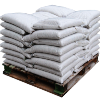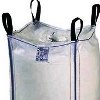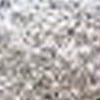| Anmol Chemicals is the pioneer manufacturers of Stannous Chloride Dihydrate & Anhydrous, Pharmaceutical Excipients Food & Flavor chemicals in India. We offer Halal and Kosher Stannous Chloride Dihydrate & Anhydrous made in an ISO9001, ISO22000 (FSSC22000) cGMP and GLP certified facility. Our group has several manufacturing facilities spread across the world, supported by toll manufacturers and representatives in UAE, Europe, USA, China and has several associated manufacturing facilities spread across India. All the Information on Physics, Chemistry, Applications, Uses and Technology on Manufacture of Stannous Chloride Dihydrate & Anhydrous is in these pages. |
| The units in the group have one or more of the certifications like FDA GMP, ISO 9001, ISO 22000, HACCP, REACH, Kosher & Halal and DMF support is available. |





Stannous Chloride Dihydrate SDS GHS, MSDS Sheet
Specifications of Stannous Chloride Dihydrate Manufacturers
YOU ARE HERE Stannous Chloride Dihydrate SDS GHS, MSDS Sheet
Stannous Chloride Anhydrous SDS GHS, MSDS Sheet
Stannous Chloride Dihydrate SDS GHS, MSDS Sheet, Material Safety Data Sheet
1. Product Identification
Synonyms: Stannous Chloride Dihydrate
CAS No.: 10025-69-1 (for Anhydrous it is 7772-99-8)
EINECS EC-No.: 231-868-0
Molecular Weight: 225.63 g/mol (dihydrate) [& 189.60 g/mol (anhydrous)]
Chemical Formula: SnCl2.2H2O, [SnCl2 for anhydrous]
2. Hazards Identification
GHS, Globally Harmonized System Classification in accordance with 29 CFR 1910
Classification according to Regulation (EC) No 1272/2008
Acute toxicity, Oral Category 4
Skin corrosion/irritation Category 1A, B, C
Sensitization, Skin Category 1
Acute toxicity, inhalation Category 4
Specific target organ toxicity, single exposure; Respiratory tract irritation Category 3
Hazardous to the aquatic environment, long-term hazard Category 1
Labeling according GHS & Regulation (EC) No 1272/2008
GHS Label Elements  Aquatic Toxicity |
GHS Label Elements |
Signal Words: Danger
Hazard statements:
H302: Harmful if swallowed.
H314: Causes severe skin burns and eye damage.
H317: May cause an allergic skin reaction.
H332: Harmful if inhaled.
H335: May cause respiratory irritation.
H410 Very toxic to aquatic life with long lasting effects.
Precautionary statements:
P261: Avoid breathing dust/ fume/ gas/ mist/ vapors/ spray.
P262: Do not get in eyes, on skin, or on clothing.
P264: Wash skin thoroughly after handling.
P270: Do not eat, drink or smoke when using this product.
P271: Use only outdoors or in a well-ventilated area.
P272: Contaminated work clothing should not be allowed out of the workplace.
P273: Avoid release to the environment.
P280: Wear protective gloves/protective clothing/eye protection/face protection.
P330: Rinse mouth
P301+P312: IF SWALLOWED: Call a POISON CENTER or doctor/physician if you feel unwell.
P302+P352: IF ON SKIN: Wash with soap and water.
P303+361+353: IF ON SKIN (or hair): Remove/Take off immediately all contaminated clothing. Rinse skin with water/shower.
P304+340: IF INHALED: Remove victim to fresh air and keep at rest in a position comfortable for breathing.
P305+P351+P338: IF IN EYES: Rinse cautiously with water for several minutes. Remove contact lenses, if present and easy to do. Continue rinsing.
P314: Get Medical advice/attention if you feel unwell.
P330: Rinse mouth.
P301+330+331: IF SWALLOWED: Rinse mouth. Do NOT induce vomiting.
P332+P313: If skin irritation occurs: Get medical advice/attention.
P333+313: If skin irritation or a rash occurs: Get medical advice/attention.
P337+P313: If eye irritation persists: Get medical advice/ attention.
P360: Rinse immediately contaminated clothing and skin with plenty of water before removing clothes.
P362: Take off contaminated clothing and wash before reuse.
P391: Collect spillage.
P405: Store locked up.
P501: Dispose of contents/ container to an approved waste disposal plant.
According to European Directive 67/548/EEC as amended:
Hazard symbol(s): C
R-phrase(s)
R22: Harmful if swallowed.
R34: Causes burns.
S-phrase(s)
S26: In case of contact with eyes, rinse immediately with plenty of water and
seek medical advice.
S36/37/39: Wear suitable protective clothing, gloves and eye/face protection.
S45: In case of accident or if you feel unwell, seek medical advice immediately.
OSHA Hazards: Hazardous. Harmful by ingestion., Irritant.
Target Organs: Liver, Nerves., Kidney, Lungs
3. Composition/Information on Ingredients
Ingredient: Stannous Chloride Dihydrate
CAS No.: 10025-69-1 (for Anhydrous it is 7772-99-8)
EINECS EC-No.: 231-868-0
Percent: 97 - 100%
4. First Aid Measures
Always seek medical attention after first aid measures are provided.
Inhalation: Remove to fresh air. If not breathing, give artificial respiration. If breathing is difficult, give oxygen. Get medical attention.
Ingestion: Never give anything by mouth to an unconscious person. Get medical attention.
Skin Contact: Wipe off excess material from skin then immediately flush skin with plenty of water for at least 15 minutes. Remove contaminated clothing and shoes. Get medical attention. Wash clothing before reuse. Thoroughly clean shoes before reuse.
Eye Contact: Immediately flush eyes with plenty of water for at least 15 minutes, lifting lower and upper eyelids occasionally. Get medical attention immediately.
5. Fire Fighting Measures
Flammability of the Product: Non-flammable.
Products of Combustion: Hydrogen chloride gas, Tin/tin oxides.
Fire: Stannous Chloride Dihydrate is not considered to be a fire hazard.
Explosion: Stannous Chloride Dihydrate is Slightly explosive in presence of heat & Metals.
Fire Extinguishing Media: Use any means suitable for extinguishing surrounding fire. Use water spray, alcohol-resistant foam, dry chemical or carbon dioxide.
Special Information: In the event of a fire, wear full protective clothing and NIOSH-approved self-contained breathing apparatus with full face piece operated in the pressure demand or other positive pressure mode. At high temperatures or when moistened under fire conditions, it may produce toxic or irritating fumes. On decomposition it may emit hydrogen chloride. Containers may explode on heating
6. Accidental Release Measures
Small Spill: Avoid dust formation. Avoid breathing dust. Ensure adequate ventilation. Use appropriate tools to put the spilled solid in a convenient waste disposal container. Finish cleaning by spreading water on the contaminated surface and dispose of according to local and regional authority requirements.
Large Spill: Stannous Chloride Dihydrate is a corrosive solid. Avoid touching the spilled material. Do not let the product enter drains. Use a shovel to put the material into a convenient waste disposal container. Do not contaminate the environment.
7. Handling and Storage
Do not ingest. Do not breathe dust. Wear suitable protective clothing. In case of insufficient ventilation, wear suitable respiratory equipment.
Avoid contact with skin and eyes. Avoid formation of dust and aerosols. Wash hands thoroughly after handling. Provide appropriate exhaust ventilation at places where dust is formed. If you feel unwell, seek medical attention.
Keep Stannous Chloride Dihydrate in a tightly closed container, stored in a cool, dry, ventilated area. Protect against physical damage.
8. Exposure Controls/Personal Protection
Airborne Exposure Limits:
USA ACGIH ACGIH TWA (mg/m³): 2 mg/m³
USA OSHA OSHA PEL (TWA) (mg/m³): 2 mg/m³
Ventilation System: A system of local and/or general exhaust is recommended to keep employee exposures as low as possible. Local exhaust ventilation is generally preferred because it can control the emissions of the contaminant at its source, preventing dispersion of it into the general work area.
Personal Respirators (NIOSH Approved): For conditions of use where exposure to dust or mist is apparent and engineering controls are not feasible, a particulate respirator may be worn. For emergencies or instances where the exposure levels are not known, use a full-face positive-pressure, air-supplied respirator.
Skin Protection: Wear protective gloves and clean body-covering clothing.
Eye Protection: Use chemical safety goggles and/or full face shield where dusting or splashing of solutions is possible. Maintain eye wash fountain and quick-drench facilities in work area.
Other Control Measures: Maintain good housekeeping in work area. Dust deposits on floors and other surfaces may pick up moisture and cause the surfaces to become slippery and present safety hazards. Handle in accordance with good industrial hygiene and safety practice. Wash hands after handling.
9. Physical and Chemical Properties
Appearance: Stannous Chloride Dihydrate is white powder or crystals.
Odor: It is odorless.
Solubility: It is freely soluble in water.
pH: NA
Density: 2.71 g/mL at 20C (68F)
Molecular Weight: 225.63 g/mol (dihydrate) [& 189.60 g/mol (anhydrous)]
Molecular Formula: SnCl2.2H2O, [SnCl2 for anhydrous]
% Volatiles by volume @ 21C (70F): -
Boiling Point: 652 °C - lit.
Melting Point: 37 - 38 °C - dec.
10. Stability and Reactivity
Stability: Stannous Chloride Dihydrate is stable under ordinary conditions of use and storage.
Hazardous Decomposition Products: It emits toxic chlorine or hydrogen chloride fumes when heated to decomposition. It may form cupric oxide and hydrogen chloride and chlorine.
Hazardous Polymerization: Will not occur.
Incompatibilities: Strong oxidizing agents, metals & acids. Also incompatible with potassium, Bromine trifluoride, Hydrazine, Ethylene oxide, Metals, organic nitrates sodium, hydrazine, nitromethane, acetylene, sodium hypobromite, alcohols. Halogens..
Conditions to Avoid: Incompatibles and moisture.
11. Toxicological Information
Toxicity data
LD50 oral rat: 700 mg/kg (RTECS)
Carcinogenic Effects: No component of this product present at levels greater than or equal to 0.1% is identified as probable, possible or confirmed human carcinogen by IARC, ACGIH, NTP, OSHA.
Mutagenic Effects: Not available.
Teratogenic Effects: Not available.
Developmental Toxicity: Not available.
12. Ecological Information
LC50 other aquatic organisms 1: 37 mg/l (24 h; Daphnia magna; Anhydrous form)
EC50 other aquatic organisms 1: 50.1 mg/l (96 h; Crangon sp.; Anhydrous form)
EC50 other aquatic organisms 2: 71.8 mg/l (48 h; Crangon sp.; Anhydrous form)
Environmental Fate: Not available.
Environmental Toxicity: It is also toxic to fish. Harmful to aquatic life in very low concentrations. Stannous Chloride Dihydrate is toxic to fish and marine organisms when applied to streams, rivers, ponds or lakes.
BOD5 and COD: Not available.
Products of Biodegradation: Possibly hazardous short term degradation products are not likely. However, long term degradation products may arise.
Toxicity of the Products of Biodegradation: The products of degradation are less toxic than the product itself.
This substance/mixture contains no components considered to be either persistent, bioaccumulative and toxic (PBT), or very persistent and very bioaccumulative (vPvB) at levels of 0.1% or higher.
13. Disposal Considerations
Whatever cannot be saved for recovery or recycling should be managed in an appropriate and approved waste disposal facility. Processing, use or contamination of this product may change the waste management options. State and local disposal regulations may differ from federal disposal regulations. Dispose of container and unused contents in accordance with federal, state and local requirements.
14. Transport Information
DOT (US):
UN number: 3260 Class: 8 Packing group: III
Proper shipping name: Corrosive solid, acidic, inorganic, n.o.s. (Stannous chloride dihydrate)
Marine pollutant: No
Poison Inhalation Hazard: No
IMDG:
UN number: 3260 Class: 8 Packing group: III EMS-No: F-A, S-B
Proper shipping name: CORROSIVE SOLID, ACIDIC, INORGANIC, N.O.S. (Stannous chloride dihydrate)
Marine pollutant: No
IATA:
UN number: 3260 Class: 8 Packing group: III
Proper shipping name: Corrosive solid, acidic, inorganic, n.o.s. (Stannous chloride dihydrate)
15. Regulatory Information
USA:
OSHA Hazards: Harmful by ingestion., Skin sensitizer, Corrosive
SARA 302: No chemicals in this material are subject to the reporting requirements of SARA Title III, Section 302.
SARA 313: This material does not contain any chemical components with known CAS numbers that exceed the threshold (De Minims) reporting levels established by SARA Title III, Section 313.
SARA 311/312 Hazards: Acute Health Hazard
Massachusetts Right To Know Components: Stannous chloride dihydrate, CAS-No. 10025-69-1
Pennsylvania Right To Know Components: Stannous chloride dihydrate, CAS-No. 10025-69-1
New Jersey Right To Know Components: Stannous chloride dihydrate, CAS-No. 10025-69-1
California Prop. 65 Components: This product does not contain any chemicals known to State of California to cause cancer, birth defects, or any other reproductive harm.
Canada WHMIS Classification: Class E - Corrosive Material
HMIS (Perceived): Health hazard: 3, Flammability: 0, Physical hazards: 0
NFPA (Perceived): Health hazard: 3, Flammability: 0, Physical hazards: 0
16. Other Information
EINECS EC-No.: 231-868-0
H302: Harmful if swallowed.
H314: Causes severe skin burns and eye damage.
H317: May cause an allergic skin reaction.
H332: Harmful if inhaled.
H335: May cause respiratory irritation.
H410: Very toxic to aquatic life with long lasting effects.
C = Corrosive
Xn = Harmful
R22 = Harmful if swallowed.
R34 = Causes burns.
*************************
Our company provides this Stannous Chloride Dihydrate MSDS sheet in good faith but makes no representation as to its comprehensiveness or accuracy. This SDS sheet is intended only as a guide to the appropriate precautionary handling of the material by a properly trained person using this product. The above information has been compiled from various sources and has the possibility of discrepancy and being out-dated information. Individuals receiving the information must exercise their independent judgment and do further search in determining its appropriateness for a particular purpose. In no case shall our company be liable to loss or damages by the product user.
*************************
Stannous Chloride Manufacturers
Anmol Chemicals
S-8, SARIFA MANSION, 2ND FLANK ROAD, CHINCHBUNDER, MUMBAI 400009, INDIA
TEL: (OFFICE) 91-22-23770100, 23726950, 23774610, 23723564. FAX: 91-22-23728264
e-mail: anmolc@mtnl.net.in

Exports to USA, Canada, UAE, Dubai, South Africa, Tanzania, Kenya, Nigeria, Egypt, Uganda, Turkey, Mexico, Brazil, Chile, Argentina, Europe Netherlands, Italy, Spain, Germany, Portugal, France, Malaysia, Indonesia, Thailand, Vietnam, Korea, Japan, etc.
Copyright and Usual Disclaimer is Applicable.
